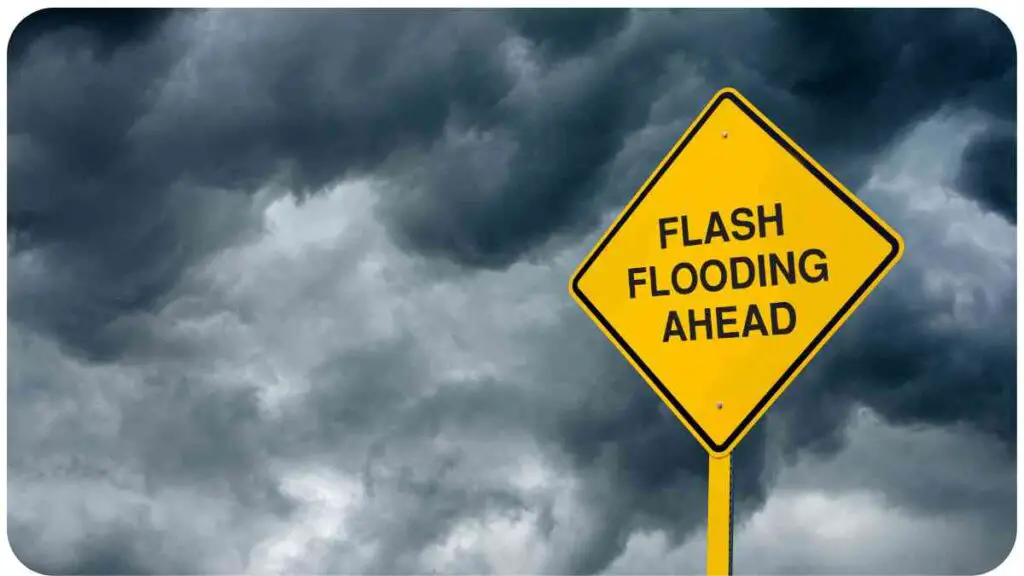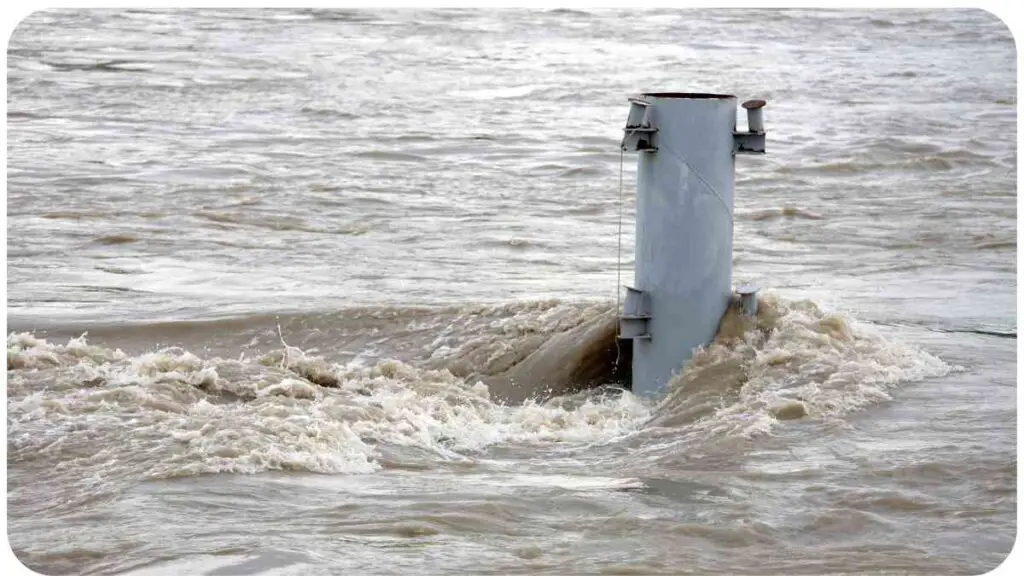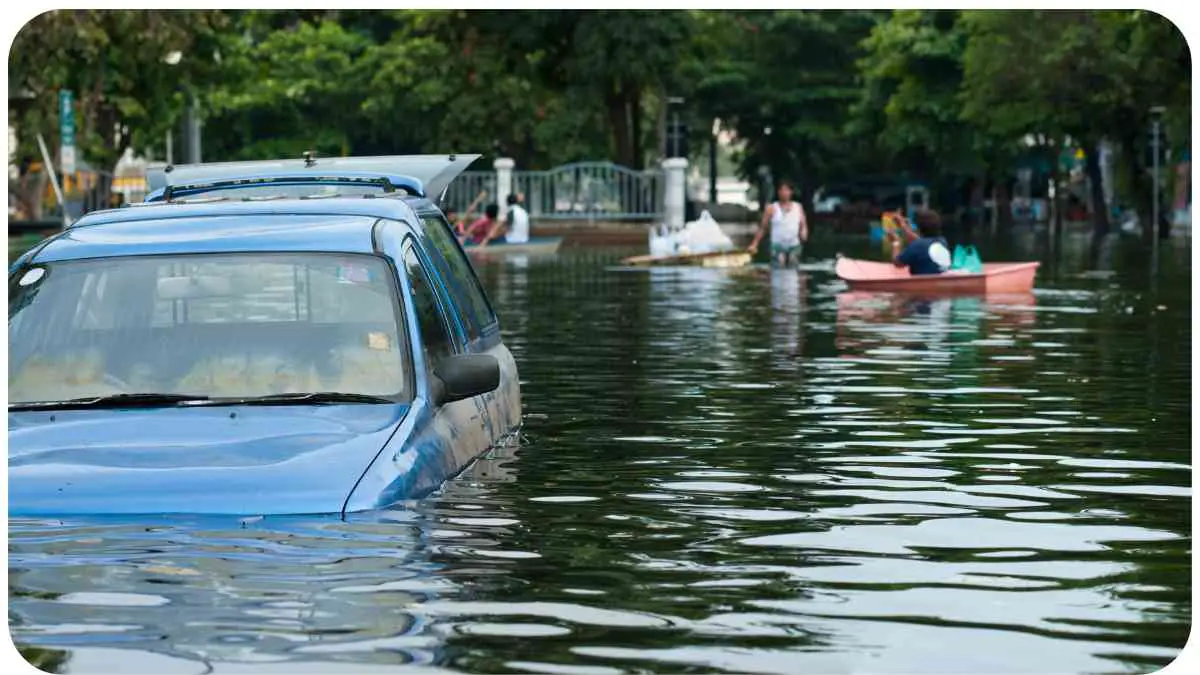Flash floods can be incredibly destructive and life-threatening events, catching people off guard due to their sudden onset. In this article, we will explore the dangers of flash floods, how to identify the signs, and crucially, how to react swiftly and effectively.
Drawing from my own experiences as a seasoned expert in disaster management, I will provide you with the knowledge and tools to stay safe in the face of this natural disaster.
| Takeaways |
| 1. Understand the dangers of flash floods. |
| 2. Learn to identify the warning signs. |
| 3. Have a solid evacuation plan in place. |
| 4. Trust credible sources for information. |
| 5. Get involved in your community’s preparedness efforts. |
| 6. Stay informed and stay safe. |
2. Understanding Flash Floods
2.1 What Causes Flash Floods?
Before diving into the signs, let’s understand what causes flash floods. These torrents of water occur when heavy rainfall overwhelms drainage systems or when rivers and streams overflow their banks. This sudden influx of water can happen in a matter of minutes, making flash floods particularly dangerous.
In the wilderness, the skies can be unpredictable. When thunder roars, learn to stay safe. Follow our guide on lightning safety for outdoor adventures.
2.2 Flash Flood vs. Regular Flood
It’s important to note the difference between flash floods and regular floods. Flash floods are rapid and occur within six hours of heavy rainfall. Regular floods, on the other hand, develop over a longer period. Now, let’s delve into recognizing the signs of an impending flash flood.
3. The Signs of an Impending Flash Flood

3.1 Rapidly Rising Water Levels
One of the most obvious signs is rapidly rising water levels. If you see water levels rising quickly in a stream or river near you, it’s time to take action.
Nature’s elements can be harsh. When in the wild, your shelter is your sanctuary. Explore our step-by-step guide to constructing a secure wilderness haven.
3.2 Unusual Weather Patterns
Keep an eye on unusual weather patterns, such as intense rainfall, especially if it follows a prolonged dry spell. These conditions can trigger flash floods.
3.3 Flash Flood Watches and Warnings
Pay attention to weather alerts. Flash flood watches and warnings are issued when conditions are ripe for flash flooding. Don’t ignore these warnings; they can save your life.
3.4 Ground Saturation
If the ground is already saturated from previous rainfall, it’s more susceptible to flash flooding. Be extra cautious during these times.
Lost in the wild? Don’t panic; navigate like a pro. Enhance your wilderness skills with our comprehensive guide. Find your way confidently in the great outdoors.
3.5 Previous Flash Flood History
Knowing the history of flash floods in your area is invaluable. If it has happened before, it could happen again. Research your local history to understand the risks.
| Signs of an Impending Flash Flood |
| Rapidly Rising Water Levels |
| Unusual Weather Patterns |
| Flash Flood Watches and Warnings |
| Ground Saturation |
| Previous Flash Flood History |
4. Reacting to Flash Flood Warnings

Now that you can identify the signs, let’s discuss how to react when you receive flash flood warnings.
4.1 Evacuation Plan
Have an evacuation plan in place. Know the safest routes to higher ground and practice your plan with your family.
In the wilderness, getting lost is a risk. Equip yourself with the ultimate navigation guide to confidently explore. Discover the secrets to finding your path in the wild.
4.2 Communication
Communication is key during emergencies. Ensure everyone in your household knows how to contact each other if you get separated.
4.3 Emergency Kit
Prepare an emergency kit with essentials like non-perishable food, water, first-aid supplies, flashlights, and important documents.
4.4 Seek Higher Ground
When you receive a flash flood warning, don’t wait. Seek higher ground immediately, and avoid low-lying areas.
| Reacting to Flash Flood Warnings |
| Evacuation Plan |
| Communication |
| Emergency Kit |
| Seek Higher Ground |
5. Surviving a Flash Flood
Survival during a flash flood requires quick thinking and action.
5.1 Staying Calm
Stay as calm as possible. Panic can cloud judgment. Keep a clear head to make rational decisions.
Flash floods can be life-threatening. Stay informed on identifying and reacting to signs of impending danger. Be prepared to navigate the challenges of nature’s powerful forces.
5.2 Avoiding Floodwater
Never attempt to cross flooded roads or walk through rushing water. It takes less force than you think to be swept away.
5.3 Rescuing Others
If you can do so safely, help others who may be in danger. Extend a hand to those who need it.
5.4 After the Flood
After the flash flood subsides, be cautious when returning home. Check for damage and avoid electrical hazards.
| Surviving a Flash Flood |
| Staying Calm |
| Avoiding Floodwater |
| Rescuing Others |
| After the Flood |
6. Personal Experiences and Expertise
Drawing from my years of experience in disaster management, I can’t stress enough how vital it is to stay informed and prepared. I’ve seen firsthand the difference it makes when individuals and communities are ready for flash floods.
7. Recognized Authorities on Flash Floods
It’s essential to rely on authoritative sources for flash flood information and guidance.
7.1 Government Agencies
Government agencies such as the National Weather Service (NWS) are experts in monitoring and predicting flash floods. Trust their alerts and follow their guidance.
7.2 Meteorological Services
Meteorological services provide up-to-date weather information. Stay informed about weather patterns that could lead to flash floods.
7.3 Local Rescue Teams
Local rescue teams are well-trained in responding to emergencies. They are your first line of defense during a flash flood. Know how to contact them.
| Recognized Authorities on Flash Floods |
| Government Agencies |
| Meteorological Services |
| Local Rescue Teams |
8. Building Trust in Flash Flood Preparedness
Building trust in your flash flood preparedness is crucial.
8.1 Credible Sources
Refer to credible sources when gathering information about flash floods. Reliable information fosters trust in your preparedness.
8.2 Community Involvement
Get involved in your local community’s disaster preparedness efforts. Collaborative efforts can enhance your trust in collective safety.
9. Conclusion
In conclusion, understanding the dangers of flash floods and knowing how to identify the signs is vital for your safety and the safety of your loved ones. Reacting swiftly to flash flood warnings and following preparedness measures can make all the difference in surviving these sudden and dangerous events.
By drawing from my own experiences and expertise, I hope I’ve provided you with valuable insights and actionable advice. Remember to stay informed, stay prepared, and trust in the guidance of recognized authorities. Together, we can minimize the risks posed by flash floods and ensure the safety of our communities.
Further Reading
- Flash Floods: Warning Signs and Staying Safe
- Explore this comprehensive guide to learn more about the warning signs of flash floods and how to stay safe during these natural disasters.
- Understanding Flash Floods: A Scientific Perspective
- Delve into the scientific aspects of flash floods in this scholarly article. Gain a deeper understanding of the meteorological factors that contribute to flash flood events.
- Flash Floods: Earth and Planetary Sciences
- This resource provides a broad overview of flash floods within the context of earth and planetary sciences. Explore various facets of flash flood research and analysis.
And here’s the “FAQs” section:
FAQs
What are flash floods, and how do they differ from regular floods?
Flash floods are sudden and rapid floods typically caused by intense rainfall or the rapid melting of snow. They differ from regular floods in terms of their speed of onset and duration.
What are the primary warning signs of an impending flash flood?
Key warning signs include rapidly rising water levels, unusual weather patterns, flash flood watches and warnings, ground saturation, and a history of previous flash floods in the area.
How can I create an effective evacuation plan for my family?
To create an effective evacuation plan, identify safe routes to higher ground, establish a communication strategy, assemble an emergency kit, and practice the plan regularly with your family.
What should I do if I find myself caught in a flash flood?
If caught in a flash flood, stay calm, avoid floodwaters, seek higher ground immediately, and help others in need if it can be done safely.
How should I assess and deal with potential damage after a flash flood?
After a flash flood, assess your surroundings cautiously, avoid electrical hazards, and prioritize safety while checking for damage or hazards in your home and community.

